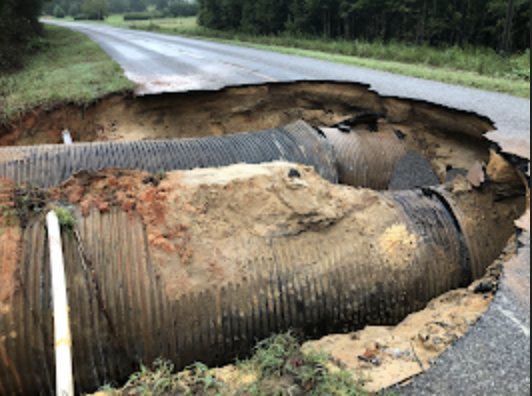Russian fighters invade#039; airport
Published 12:00 am Wednesday, February 11, 2004
Last Tuesday afternoon, the rumbling sounds of jet engines caused a slight ruckus in the Camellia City, as it appeared the Russians were on final approached with the Red Star boldly emblazoned the tails of the fighters.
Actually, the Russians were not coming, but the planes are indeed enemy jets.
According to Elton Jones, the technical consultant for the city of Greenville on the Mac Crenshaw Memorial Airport, the jets were on their way to Eglin Air Force Base in Florida to engage American pilots in mock combat.
Jones said the planes in question were manufactured in 1984 near Prague and their primary purpose is advanced military training in 16 countries in Europe, Asia, Africa and Latin America.
In other words, these are the fighter jets that the enemies of the U.S. would use in combat.
Now, airports across the U.S. are used everyday for military training, but what made this time unique was it was Greenville’s first time since the runway expansion project began.
Jones continues to oversee the project for the city and said the advances made at the airport are exciting and should make all Greenvillians proud.
&uot;We relocated the airport road and also extended the runway to 5,500 feet,&uot; Jones said.
&uot;We’ve also installed components that allow for instrument flight landing.
This means that plans can land in Greenville in any kind of weather.&uot;
As an example, Jones said recently, a medical jet plane flew into Montgomery to pick a patient needing emergency attention.
Because of the IFR, the plane landed safely by keying in the airport’s runway information and letting the computer guide it within feet of the runway.
Jones said Mayor Dexter McLendon and the city council deserve the credit for the improvements and the support they continue to give the airport.
&uot;They have been the driving force behind this project because they understand that this will help our city’s growth,&uot; Jones said.
&uot;What’s more is that the major cost of the expansion came from grants from the Federal Aviation Association and from state grants.&uot;
Jones said the visitors to the airport last Tuesday were a surprise, but gives an example of what Greenville’s airport can now accommodate.
&uot;The three jets flew in in formation and they chose Greenville because they felt they would be serviced here faster than at a bigger airport,&uot; he said.
&uot;They had traveled from all points in the U.S. and Canada and met up in St. Louis.
They then flew from St. Louis to here in just over an hour or so.&uot;
Jones said the three pilots who flew into town actually own the fighter jets themselves and routinely &uot;battle&uot; American forces.
These exercises hone the American fighter pilots’ skills and also teach them what the enemies’ planes are capable of doing.
It is not just the fighter jets that can now use the Crenshaw airport, but now more and more corporations use their own planes to shuttle employees around the country.
Jones said with the expansion, the airport could accommodate some of the largest corporate jets in the air, which makes this a valuable commodity to industries in the city.
&uot;The project brings the airport into full compliance with FAA regulations so that we can service business class jets,&uot; he said.
&uot;There have been hours put into this project for us to get this.&uot;
Jones said the airport has come a long way from where it began.
He said many years ago, Mayor Larry Etheridge put him on the Airport Improvement Committee and he never looked back.
&uot;Years ago, we only had the runway and a metal hangar,&uot; he said.
&uot;Pilots would fly in and instead of going inside, they would sit under the wings of their planes. Now we have a beautiful facility we can all enjoy and have pride in.&uot;
Jones pointed out with more international companies moving into Greenville that the airport will play a vital role.
&uot;This is very important to our growing community,&uot; said McClendon recently.
&uot;It will be a huge help to get these business recruiters in here.&uot;
The funding, as Jones said, came primarily from FAA grants, 95 percent to be exact.


